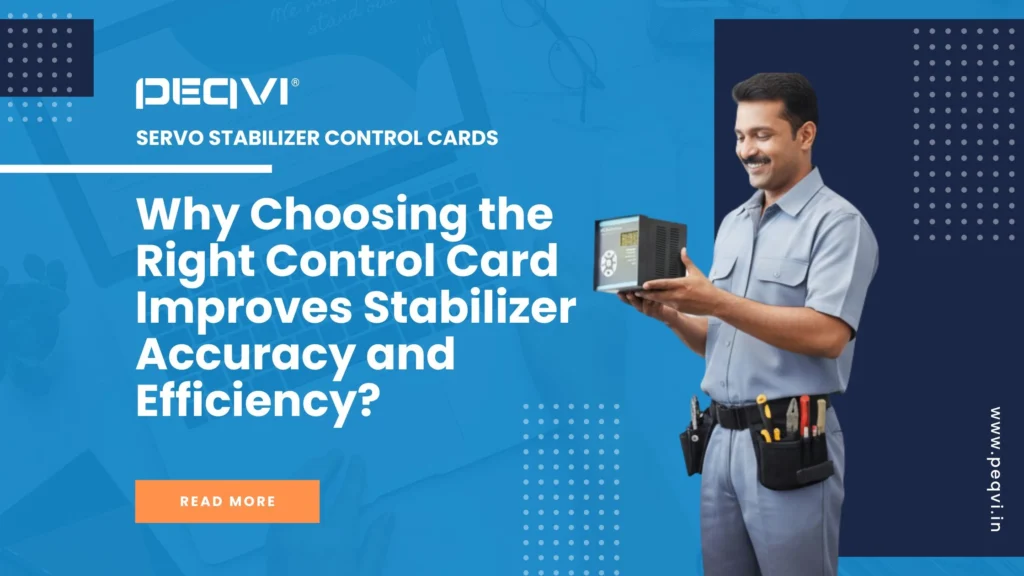A servo voltage stabilizer works only as well as the control card inside it. The card is the brain of the system and controls how fast the motor reacts and how stable the output voltage remains during heavy fluctuations. Many users focus only on the transformer or the servo motor, but the real accuracy comes from the control card design.

A good control card senses voltage changes with precision. It looks at the incoming voltage and compares it with the desired output level. If there is any drop or rise, it sends a quick signal to the motor to correct it. Slow or outdated cards delay this process and cause the stabilizer to overshoot or undershoot. This leads to unnecessary variations that can harm sensitive appliances.
Efficiency also improves when the card is designed well. A stable output means the motor runs only when needed. A poor control card keeps adjusting even when the voltage does not require correction. This increases energy use and adds extra stress on the stabilizer.
Modern cards come with better sensing circuits and strong microcontrollers. These provide faster response time and reduced error. Digital cards also allow easy calibration and accurate readings. They prevent the stabilizer from making unwanted corrections and keep the voltage steady even when the load keeps changing.
Protection features also depend on the control card. A reliable card includes overload protection, high temperature cut off, and delay start logic. These features protect both the stabilizer and the connected appliances. A weak card may fail to detect faults on time and cause long term damage.
Choosing the right control card also impacts service life. Cards built with good components and proper PCB design last longer and need fewer repairs. Cards with poor soldering or cheap parts often fail early. This increases downtime and service cost.
For best accuracy and efficiency, it is always recommended to choose a control card that offers fast correction speed, good voltage sensing accuracy, stable PCB design and strong protection features. A well designed card ensures smooth performance and gives better output quality across different load conditions.
When you pick the right control card, your stabilizer works quietly, smoothly and with higher precision. It becomes more energy efficient and stays reliable for years. This is why the control card should always be the first thing to check when selecting a stabilizer.

